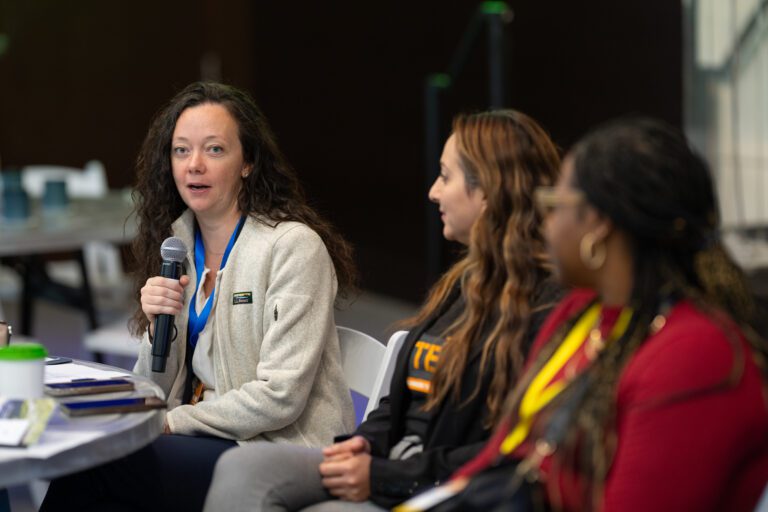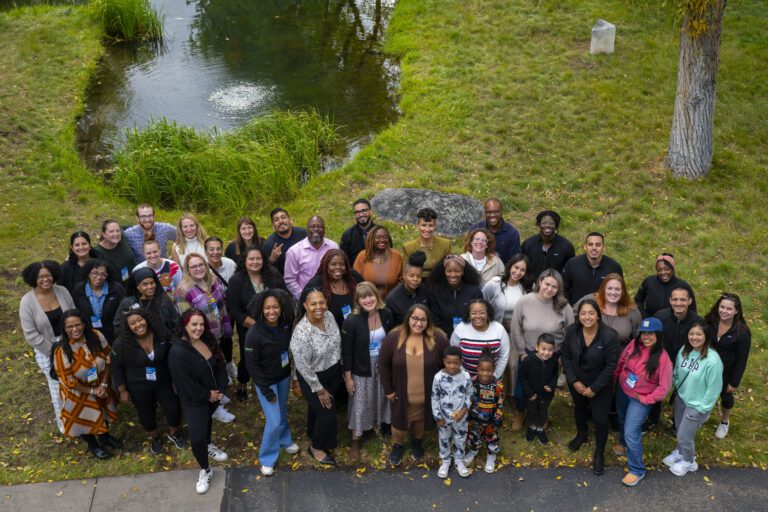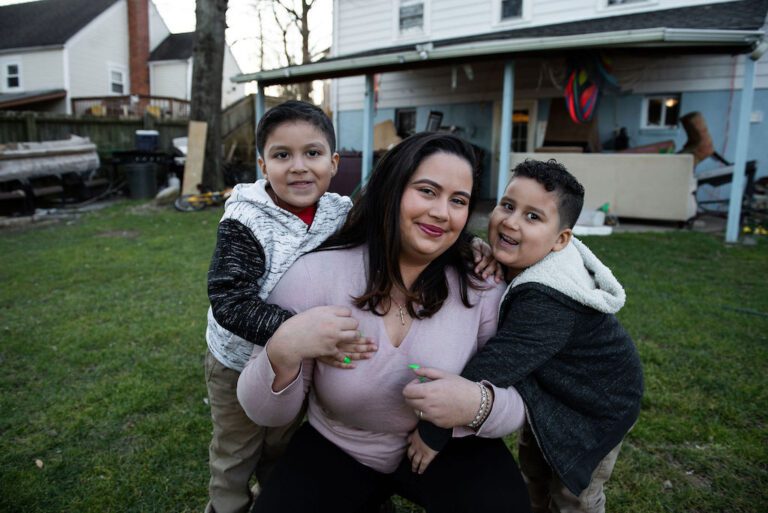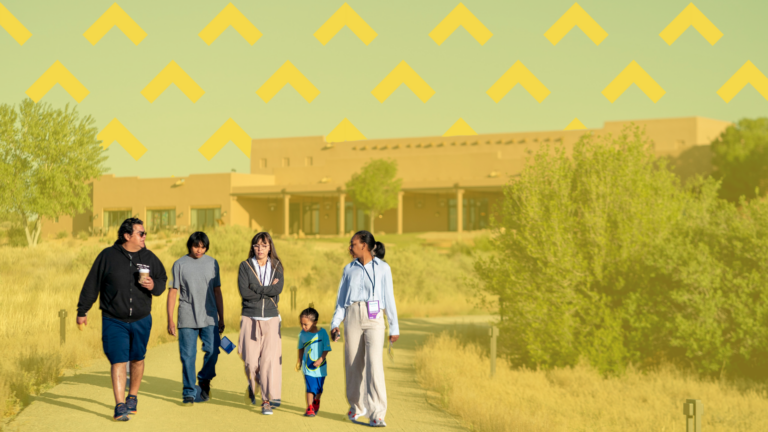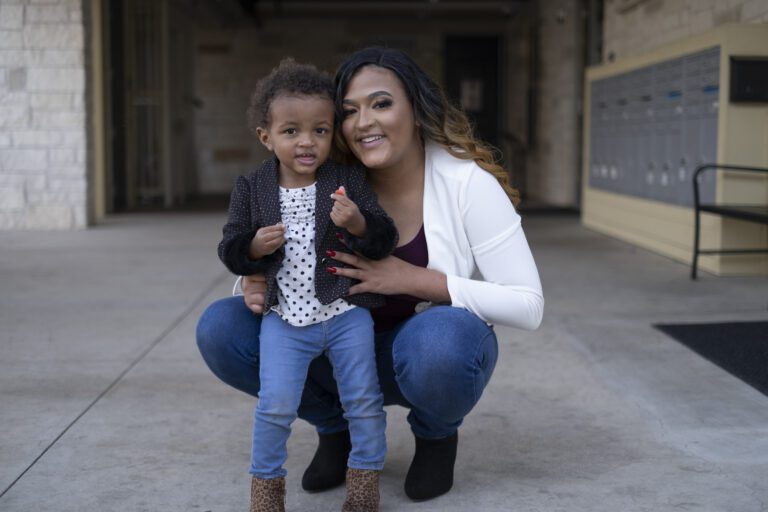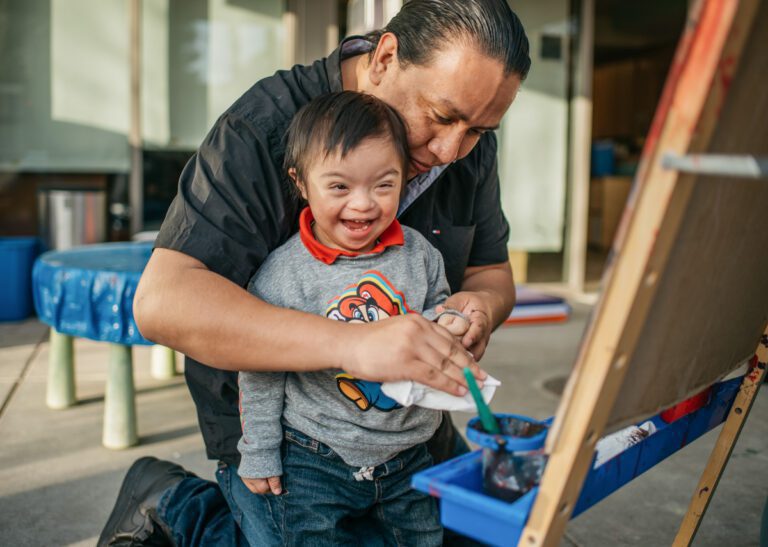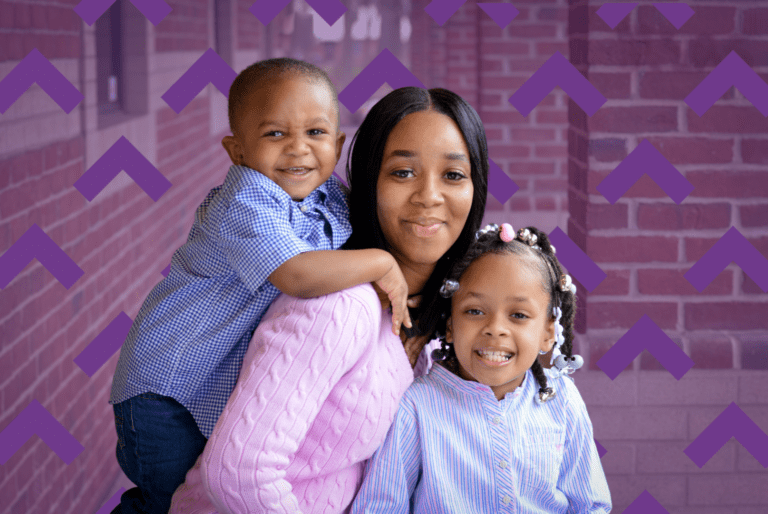Homeownership: Savannah’s Dream and Journey
From her home just up the hill from the town of Cherryfield, Maine – the wild blueberry capital of the world – Savannah Steiger can hear the rushing of the Narraguagus River and the seagulls calling in the distance.
“I really love it here,” she says of the three-bedroom Cape Cod-style house she shares with her two young children. “I have an acre of land for the kids to roam, but the town is nearby, and there is a great elementary school just a mile down the road.”
Four years ago, Savannah was working to earn her undergraduate degree while living “off-the-grid” in a small cabin in nearby Harrington, Maine, with her children and their father.

“It was a stressful situation,” she says of juggling school, caring for her children, and charging batteries to keep the lights on. “I knew I needed to find a better opportunity for my kids.”
Savannah started looking for another housing option. She needed someplace safe with access to good schools for her children and other amenities. It also had to be near her own school so she could get to classes and get her kids to school, child care, and doctor appointments.
“I was a full-time student and a stay-at-home parent. My partner’s work was seasonal. Our income fluctuated wildly,” says Savannah. “None of the rental places I found were affordable.”
At the time, Savannah was a participant in Family Futures Downeast, a program in Washington County, Maine, that supports mothers with low incomes in earning their college degree. In addition to tuition assistance, the program offers participating families financial coaching, budget planning, child care, and other supports.
Through Family Futures Downeast, Savannah qualified for Building Family Futures, a pilot project administered by the Maine State Housing Authority (MaineHousing). This connection led Savannah to Section 8.
Section 8
The U.S. Department of Housing and Urban Development (HUD)’s Housing Choice Voucher program, also known as Section 8, is a federal program designed to help families with low incomes access safe, affordable, and sanitary housing in the private market. Section 8 participants secure housing that meets the program requirements (e.g., housing quality standards, working utilities, safety) and HUD funds local public housing agencies (PHAs) to manage the vouchers. Section 8 participants pay 30 percent of their income to housing costs. A local PHA covers the balance, paying a housing subsidy directly to the landlord on behalf of the participating family. As the income of a Section 8 participant increases, their share of the monthly payment goes up.
Eligibility for a housing voucher is set by the local PHA and can vary by state or county. It is typically based on annual gross income and family size. In general, the combined household income must be less than 50 percent of the area median income (AMI). By law, a PHA must provide at least 75 percent of its vouchers to applicants whose incomes do not exceed 30 percent of the AMI. Although Section 8 was designed to provide rental assistance to families, qualifying participants can use the support to supplement mortgage payments.
With limited spots, families nationwide who are eligible for Section 8 often sit on waiting lists for years. However, as a participant in Building Family Futures, Savannah was eligible for immediate consideration. She completed her Section 8 application in Spring 2019 and secured her voucher that August. The extra funds put housing that met Savannah’s family’s needs within budget. She and her two children moved into their new home on Valentine’s Day 2020.
Tenant to Home Owner
Through the partnership between Family Futures Downeast and MaineHousing, Savannah connected with ReStart, MaineHousing’s Family Self Sufficiency (FSS) program. ReStart pairs Section 8 participants with career and financial coaching as well as education and employment support. Participants work with a coach to hone their financial skills and improve their credit score while pursuing a goal they set for themselves – such as buying their own home.
ReStart also helps participants build financial savings. As participants increase their earned income and their portion of the housing payment goes up, ReStart matches the difference, putting the funds in an escrow account (i.e., if the monthly rent goes up $50, ReStart puts $50 into an escrow account). The escrow account transfers to the participant upon successful completion of the program. While Savannah was completing the ReStart program, she earned a degree in Psychology and Community studies and started a full-time job. As the jump in monthly income pushed up her monthly rent, ReStart put the difference into an escrow account.
Although participants can take up to five years to complete the ReStart program, Savannah graduated in just under two years. With the funds from the escrow account, she had enough money saved to make an offer on the house she was renting. And, through her work with ReStart, she had established credit to qualify for a mortgage loan. Tapping into the grantwriting skills she developed as an Ascend Parent Advisor to the Parent Powered Solutions Fund, Savannah secured a $10,000 grant from Maine’s Housing Barrier Removal Fund. The fund was set up to help individuals and families in Downeast Maine meet their long-term housing goals. Savannah secured another $5,000 grant from Maine Housing’s First Home Loan Program. The grants helped cover the closing costs, taxes, and mortgage insurance on her new home. She took ownership of the house on March 17, 2023.
Through ReStart, Savannah developed the financial skills needed to set and stick to a monthly budget. With that in place, she is confident she can continue to make monthly mortgage payments and cover other household expenses.
“Savannah is tenacious,” says Laurie Glidden, who, as one of ReStart’s two full-time staff members, provided Savannah with one-on-one financial coaching. “Between the various programs she worked with, she had a lot of support and coaching, and she had the voucher, but she is the one who set the goal of buying house and she is the one who worked really hard to get it done.”
Expanding the Model
ReStart is recognized by the National Council of State Housing Authorities (NCSHA) as a model approach to helping families build the financial independence needed to purchase their first home. Evidence of home ownership as an important vehicle for economic mobility in the United States. Its ability to generate wealth for families is well documented. Other studies show home ownership can lead to better school performance for children and increased social and community engagement. Yet in a study of families with low incomes throughout the U.S. conducted by Child Trends in partnership with Ascend, 60 percent of families reported living in rented housing. The report found renting is particularly common among young parents (76 percent).
“We know kids who grow up in homes that are owned by a parent or family member have a much better outcome and a stronger foundation because they don’t have to move around as much,” says Scott Thistle of Maine Housing. “When someone successfully completes ReStart, they not only change their lives forever, but also set a financial base for their families as their children begin to see what financial stability looks like.”
With dedicated staff, flexible program limits, and input from the families it aims to support, the ReStart approach is replicable. Nationally, the Family Self Sufficiency program is often referred to as a “best kept secret.” But even families who are ‘in the know’ face challenges to entering the program.
The primary barrier to expanding Section 8 assistance is cost. With a budget of $30 billion in 2022, Section 8 is the largest line item in HUD’s annual budget. These funds enable local housing authorities to provide Section 8 vouchers to an average of 1 in 4 eligible families per year. Strong bipartisan support for the program has helped stave off attempted funding cuts, but the budget has remained largely flat while housing costs continue to go up. A modest increase in the 2023 program focused on balancing out rising rental costs and allowed for just 50,000 additional households nationwide to enter the program.
Additionally, the Section 8 application can be a rigorous process for families. Participants must meet a variety of requirements, including income qualifications and citizenship status, reflect HUD’s definition of a “family,” and pass a criminal background check. Guidelines that vary by state and even by county can further complicate the process. Families on the waiting list are faced with more paperwork as they must regularly update their status and confirm they are interested in continuing with the program.
For mortgage (rather than rental) assistance, HUD has additional Section 8 requirements. Local PHAs that offer Section 8 as a pathway to home buying also have their own rules. To qualify for mortgage assistance using Section 8, HUD requires an applicant:
- Be a current Section 8 housing choice voucher participant;
- Have income of at least $14,500 per year (local agencies may require more);
- Be a first-time homebuyer according to HUD’s definition (i.e., have not owned a home in the last three years);
- Work at least 30 hours per week and have been employed for at least a year (unless elderly or disabled);
- Participate in homebuyer education and counseling (e.g., a program such as ReStart);
- Have no previous defaults on a mortgage while receiving Section 8 homeownership assistance; and
- Meet the local PHA’s rules for the program, which often stipulate a minimum credit score or savings balance.
Lasting Benefits
Section 8 homeownership programs, when available, allow families to build equity by putting money toward a mortgage instead of rent. Research shows these programs are highly effective at reducing homelessness, housing instability, and overcrowding and at improving other outcomes for families and children. They also give families with low incomes greater choice about where they live, enabling them to move to neighborhoods with lower poverty rates and more resources, including better schools and health care facilities.
By helping participants strengthen their financial skills, save money, and build credit, programs like ReStart are putting homeownership in reach for more families. ReStart works with an average of 75 families per year. As participants graduate from the program, they make way for new families to start building financial independence.
In 2021, ReStart graduates collectively saved nearly $44,000, with 89 percent of the group also increasing their earnings, and 100 percent of the group gaining independence from Section 8. Laurie Glidden is quick to note that the program is not a hand out. Families who opt to use Section 8 as a path to home ownership work hard to strengthen their credit scores and establish the financial footing needed to qualify for the program. Savannah is one of just six ReStart participants who have achieved home ownership in the past five years.
But for Savannah, the payoff was worth the effort. “I’m finally in a place where I can see myself staying for a long time – and my kids are thriving,” says Savannah, who is now earning her master’s degree in counseling. “The financial and moral support I got [through these programs] truly changed my life.”
Related Posts
